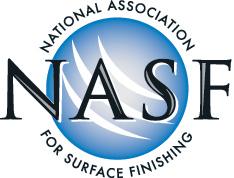| Presented in Partnership with: | |||
 |
 |
 |
 |
Search Results
The 42nd William Blum Lecture, Fundamental Aspects of Alloy Plating
Author: Prof. Dr. Dieter Landolt
Issue: , 2001Electrodeposited alloys find many applications in the electronics, micromechanics and surface finishing industry. The composition of electroplated alloys is governed by the kinetics of the partial electrode reactions and it can be modeled in terms of mixed potential theory commonly used in corrosion science. Due to competitive adsorption phenomena at the electrode surface, the partial currents of codepositing metals can be larger or smaller than those in single metal plating under otherwise identical conditions. The present paper provides an overview of fundamental aspects of alloy deposition and of phenomena which determine deposit composition. The role of mass transport and current distribution is outlined, and modeling of anomalous and induced codeposition behavior is discussed and illustrated with examples. Pulse plating of alloys is considered taking into account the role of the displacement reactions during the off-time.
 |
 |
 |
 |
 |
| Home | Subscribe | Regulations | Compliance Assistance | News | Resources | Resource Locators | Directories | Online Training | About | Search | Contact | NASF.org |
The information contained in this site is provided for your review and convenience. It is not intended to provide legal advice with respect to any federal, state, or local regulation.
You should consult with legal counsel and appropriate authorities before interpreting any regulations or undertaking any specific course of action.
Please note that many of the regulatory discussions on STERC refer to federal regulations. In many cases, states or local governments have promulgated relevant rules and standards
that are different and/or more stringent than the federal regulations. Therefore, to assure full compliance, you should investigate and comply with all applicable federal, state and local regulations.
